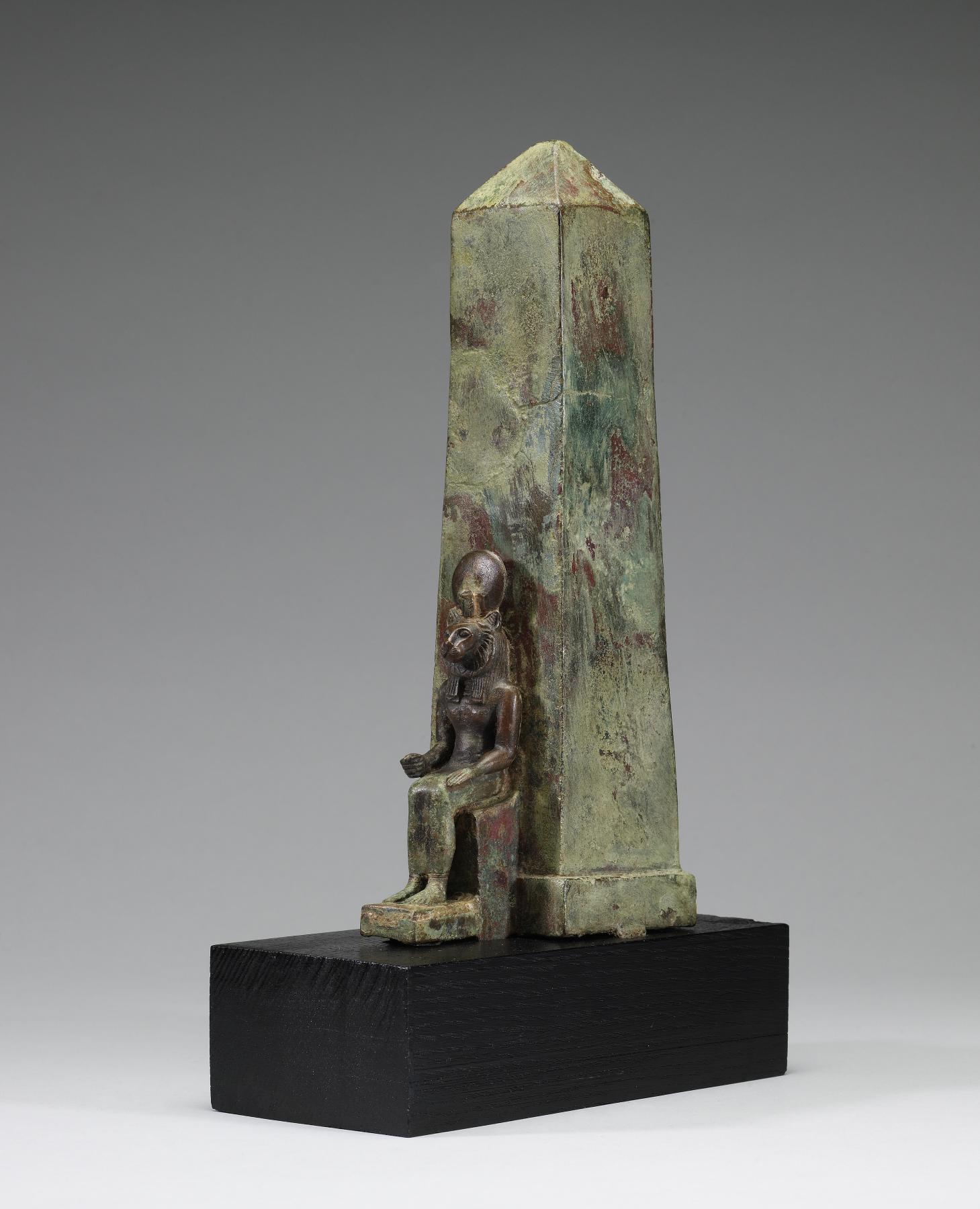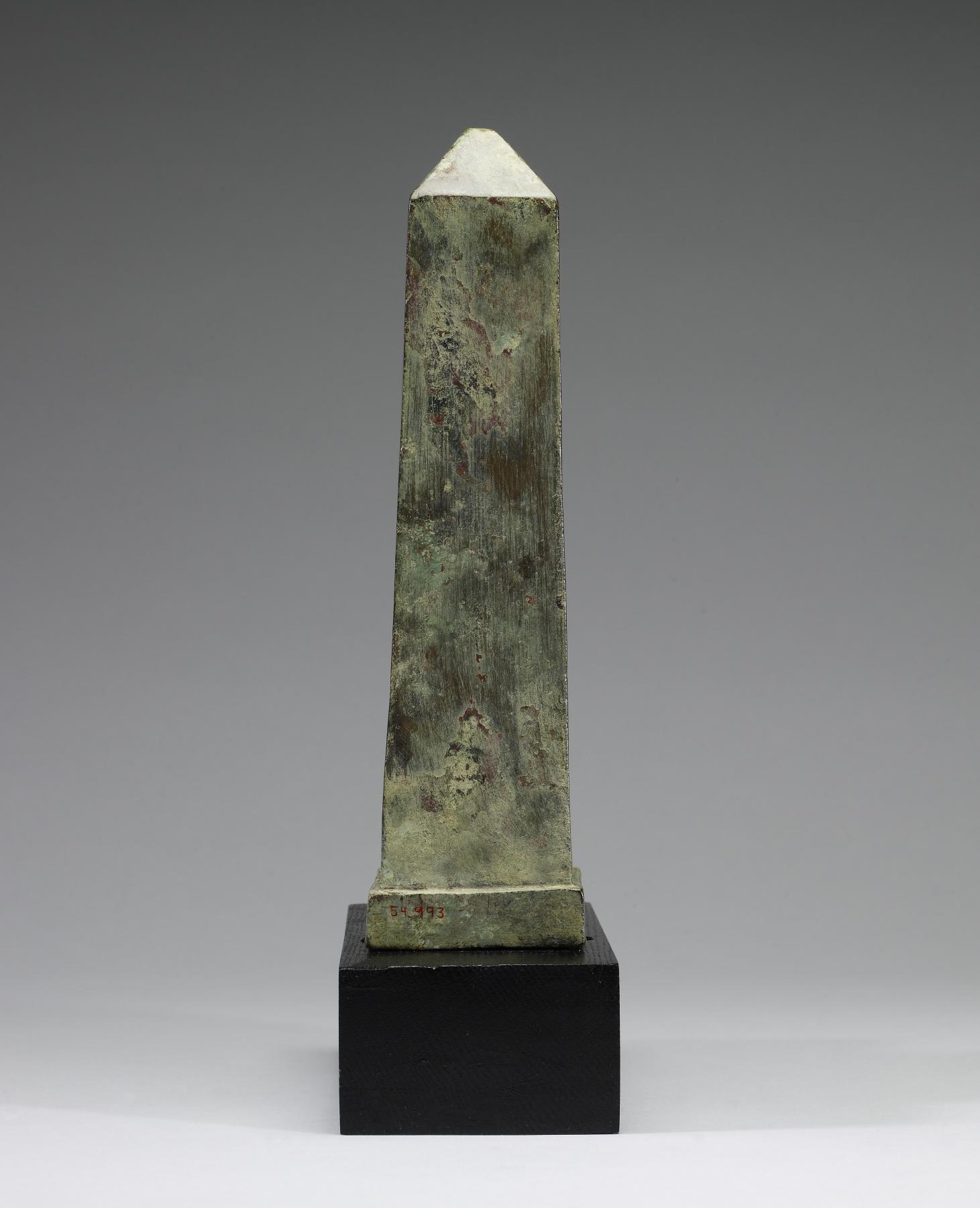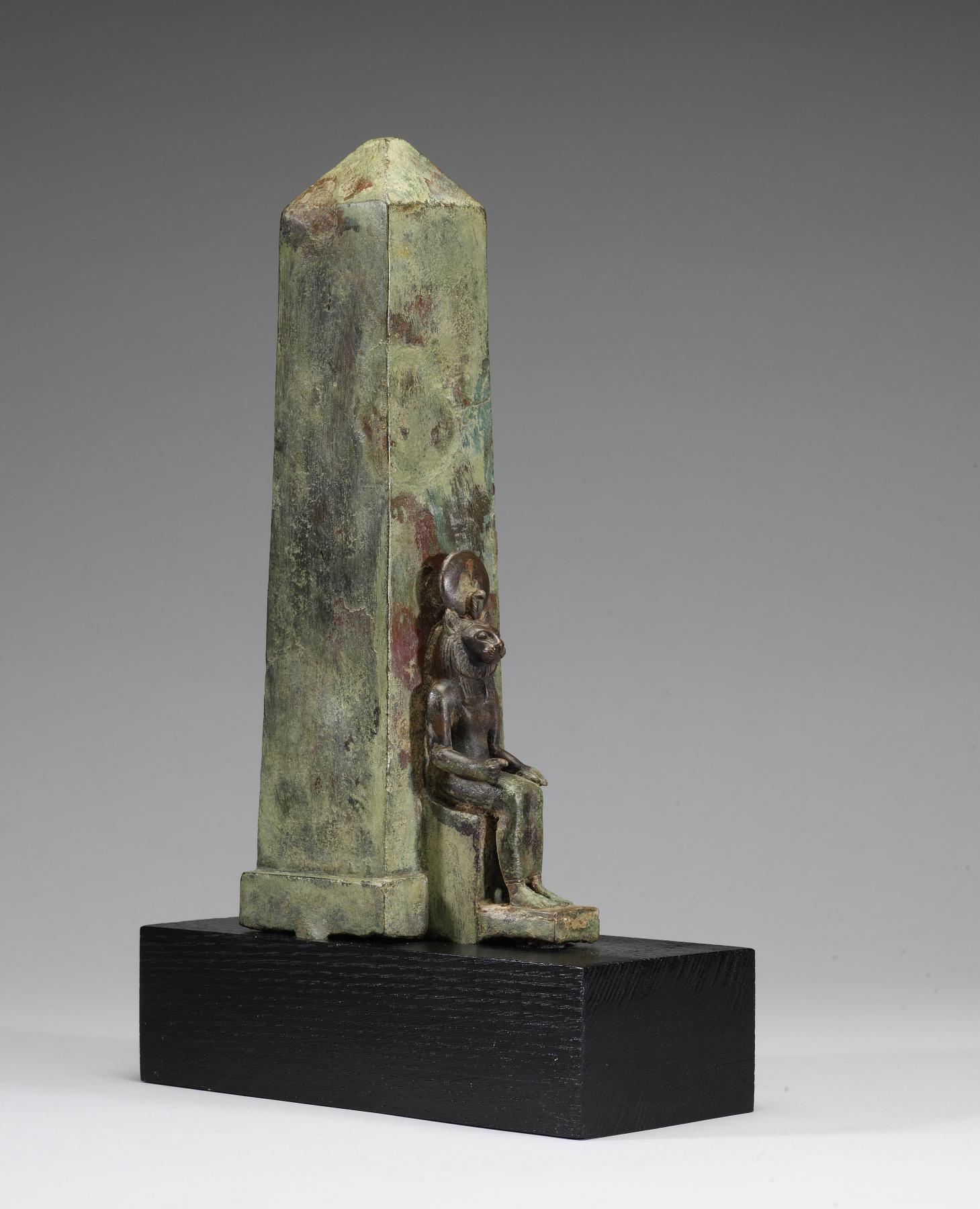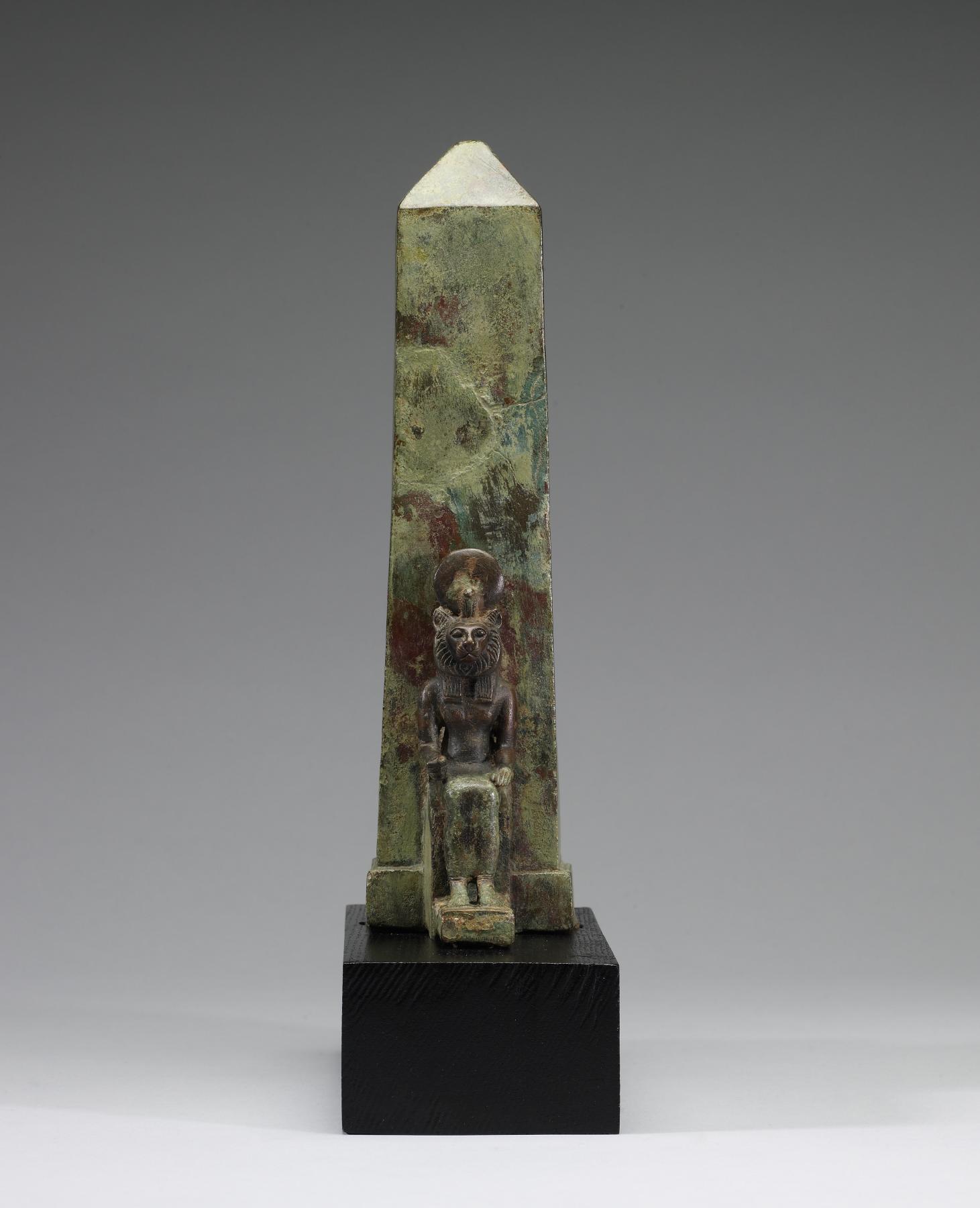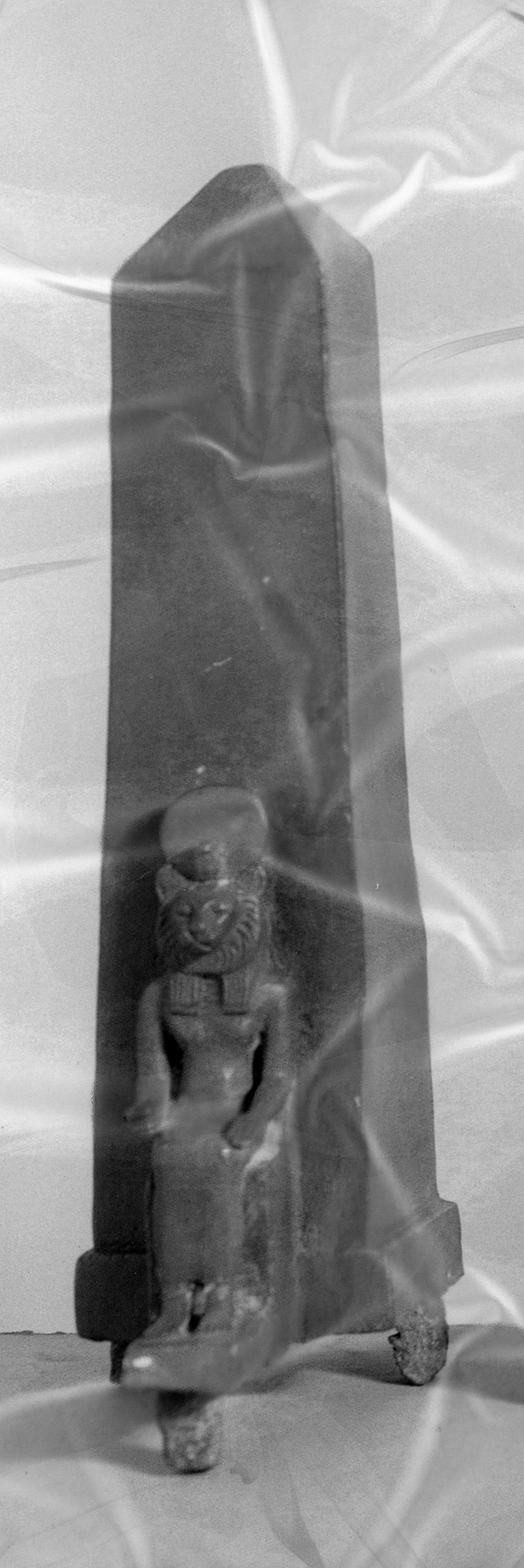Figure of a Lion-Headed Goddess in Front of an Obelisk
(Ancient Egypt and Nubia )
The ancient Egyptians donated figures of their gods for use in temple rituals; smaller images served as amulets to ensure divine protection. Goddesses in particular were viewed as protective deities. From earliest times, Egyptian venerated a wide circle of feline-headed female deities, such as Sakhmet, Tefnut, Wadjet, and Bastet. Leonine goddesses, usually Sakhmet or Wadjet (daughters of the sun-god Re), were often associated with an obelisk - a symbol of the sun god - demonstrating both their close relationship to the supreme god and his powers of renewal.
Provenance
Provenance (from the French provenir, 'to come from/forth') is the chronology of the ownership, custody, or location of a historical object. Learn more about provenance at the Walters.
Dikran Kelekian, New York and Paris [date and mode of acquisition unknown] [said to be from Mit Rahina (Memphis), Egypt]; Henry Walters, Baltimore, 1930, by purchase; Walters Art Museum, 1931, by bequest.
Exhibitions
| 2006-2007 | Daily Magic in Ancient Egypt. The Walters Art Museum, Baltimore. |
Conservation
| Date | Description | Narrative |
|---|---|---|
| 9/17/1959 | Treatment | cleaned |
Geographies
Egypt (Place of Origin)
Measurements
H: 10 3/16 x W: 2 7/8 x D: 4 5/8 in. (25.9 x 7.3 x 11.7 cm); H with tangs: 11 x W: 2 7/8 x D: 4 5/8 in. (27.9 x 7.3 x 11.7 cm); H with base: 12 5/16 x W: 3 5/16 x D: 7 1/2 in. (31.2 x 8.4 x 19.1 cm)
Credit Line
Acquired by Henry Walters, 1930
Location in Museum
Not on view
Accession Number
In libraries, galleries, museums, and archives, an accession number is a unique identifier assigned to each object in the collection.
In libraries, galleries, museums, and archives, an accession number is a unique identifier assigned to each object in the collection.
54.993

